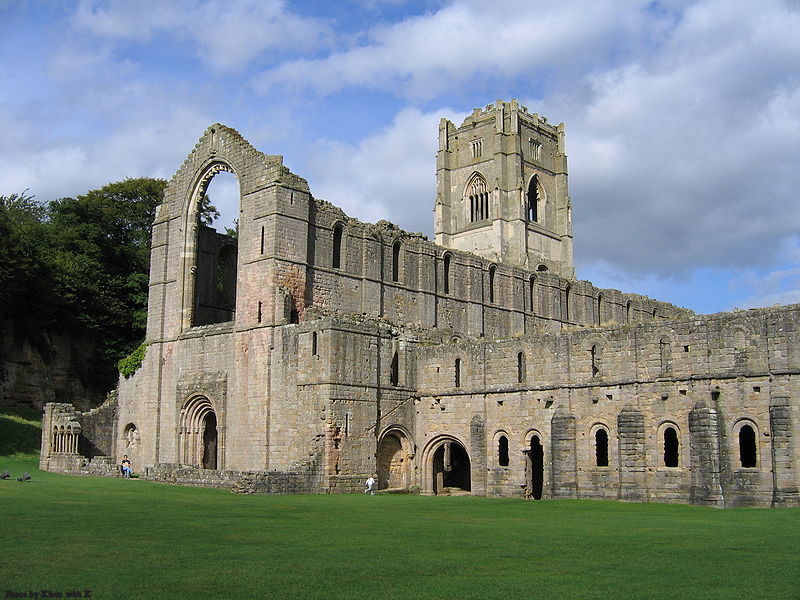St. William of York
(WILLIAM FITZHERBERT, also called WILLIAM OF THWAYT).
Archbishop of York. Tradition represents him as nephew of King Stephen, whose sister Emma was believed to have married Herbert of Winchester, treasurer to Henry I. William became a priest, and about 1130 he was canon and treasurer of York. In 1142 he was elected Archbishop of York at the instance of the king, in opposition to the candidature of Henry Murdac, a Cistercian monk. The validity of the election was disputed on the ground of alleged simony and royal influence, and Archbishop Theobald refused to consecrate him pending an appeal to Rome. St. Bernard exercised his powerful influence against William in favour of Murdac, but in 1143 the pope decided that William should be consecrated, if he could clear himself from the accusation of bribery, and if the chapter could show that there had been no undue royal pressure. William proved his innocence so conclusively that the legate consecrated him archbishop at Winchester 26 September, 1143. He set himself at once to carry out reforms in his diocese, and his gentleness and charity soon won him popularity; but he neglected to obtain from Cardinal Hincmar the pallium which Lucius II sent him in 1146, and the pope died before William had been invested. The new pope, Blessed Eugenius III, was himself a Cistercian, and the English Cistercians soon renewed their complaints against William, which St. Bernard supported. Meanwhile Hincmar carried the pallium back to Rome, so that, in 1147, William had to travel there to obtain it, raising the expenses of his journey by sale of treasurers and privileges belonging to York. This afforded fresh matter of complaint and finally the pope suspended him from his functions on the ground that he had enthroned the Bishop of Durham without exacting the pledges required by the former pope.
William took refuge with his friend, the King of Sicily, but his partisans in England took an unwise revenge by destroying Fountains Abbey, of which Murdac was now prior. This further inflamed St. William’s enemies, who again approached the pope, with the result that in 1147 he deposed the archbishop from his seat; and on the failure of the chapter to elect a successor, he consecrated Murdac in his stead. St. William devoted himself to prayer and mortification at Winchester till 1153, when the pope and St. Bernard were both dead. He then appealed to the new pope, Anastasius IV, for restoration to his see, a request which the death of Murdac in October made it easier to obtain. St. William having received the pallium, returned to York, where he showed the greatest kindness to the Cistercians who had opposed him, and promised full restitution to Fountains Abbey. But his death, so sudden as to cause suspicion of poison, took place within a few weeks. Miracles took place at his tomb, and in 1227 he was canonized by Pope Honorius III. In 1283 his relics were translated to a shrine behind the high altar of York Minster, where they remained till the Reformation. His festival is observed in England on 8 June.
JOHN OF HEXHAM, Continuation of SYMEON OF DURHAM in R.S. (London, 1882-5); WILLIAM OF NEWBURGH, Historius rerum anglicasarum in R.S. (London, 1884-89); Acta S.S., II June; ST. BERNARD, Epistles in P.L. CLXXXII-CLXXXV; CAPGRAVE, Nova Legenda Angliae (Oxford, 1901); CHALLONER, Britannia Sancta (London, 1745); RAINE, Historians of the Church of York in R.S. (London, 1879-94); IDEM, Fasti Eboracenses.
EDWIN BURTON (Catholic Encyclopedia)
Nobility.org Editorial comment: —
Both St. Bernard and St. William of York were of noble stock. St. Bernard was arguably the most influential man in Christendom during this period, so when he took issue with St. William’s episcopal appointment it was bound to create a disturbance. How does God allow one of his greatest saints to make a mistake like this? It is a mystery for us, but Prof. Plinio Correa de Oliveira once said that one of the greatest sufferings that exists is when two saints clash. For the rest of his life, a pall hung over the head of St. William. He suffered everything with Gospel meekness and forgave his enemies wholeheartedly, as Our Savior told us to do.











